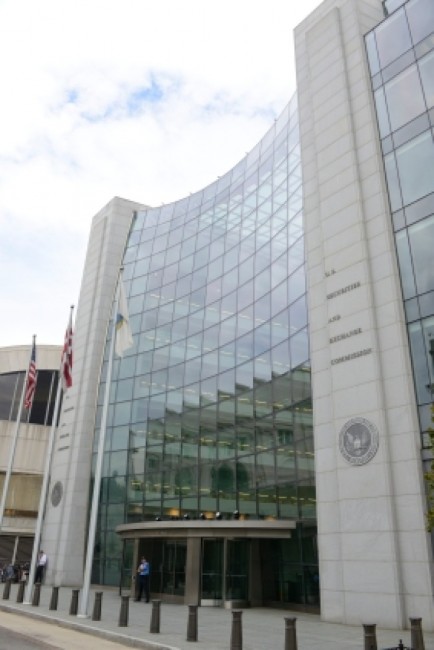Show posts for: D&O
-
 Read more
Read moreThe turn of the calendar is always a good time to reflect on what has come before and preview what lies ahead. In this post, we count down our most popular posts of 2015 about executive disputes. Later, we’ll look at what to expect in 2016.
-
 Read more
Read moreThe famous scientist Nikola Tesla was prolific not only in his scientific writings and experiments, but he has also become quite the posthumous eponym. From 80s rock bands to electric car manufacturers, the Tesla name continues to find its way into the headlines. Nikola’s more recent namesake, Tesla Motors (named for Mr. Tesla’s patented AC induction motor), was allegedly the target of a former disgruntled employee, Nima Kalbasi. Prosecutors say that Mr. Kalbasi, a Canadian national and mechanical engineer, hacked the company’s servers. According to The Washington Times, Mr. Kalbasi was terminated on December 3rd of last year, but not before he was able to ferret out his boss’s email credentials. For the next few weeks, according to allegations in Mr. Kalbasi’s criminal case, Mr. Kalbasi repeatedly accessed Tesla’s corporate server to retrieve employee reviews and at least one consumer complaint against the company, which he published online along with some other disparaging commentary. Ironically, Mr. Kalbasi allegedly used in his computer hacking the wireless technology that many credit to Mr. Tesla himself.
-
 Read more
Read moreOn July 1, the SEC issued long-awaited proposed rules pursuant to the 2010 Dodd-Frank Act. As we've discussed in prior posts here and here, Section 954 of Dodd-Frank required the SEC to direct national security exchanges not to list any company that does not adopt a policy requiring recovery of incentive-based pay received by executive officers in excess of what would have been received under an accounting restatement. Although the new rules are only proposals and they could change after public comment, it's not too early for executives to begin to plan for the financial issues they will face in the event their company issues a financial restatement, as 746 companies did in 2014.
Clawbacks of executive compensation after a financial restatement are not new, of course. After the 2002 Sarbanes-Oxley Act authorized the SEC to claw back one year’s worth of incentive compensation from a CEO or CFO whenever there has been a financial restatement resulting from "misconduct," companies began voluntarily adopting clawback policies applicable to financial restatements. And after the Emergency Economic Stabilization Act of 2008 required clawback policies for companies receiving financial assistance under TARP that applied to "any bonus, retention award, or incentive compensation... based on statements of earnings, revenues, gains or other criteria that are later found to be materially inaccurate," additional companies adopted or expanded their clawback regimes. Today, most Fortune 100 companies have a clawback policy applicable to restatements (although they differ widely as to the triggering events, the types of compensation subject to clawback, whether the executive must have caused or contributed to the false or incorrect financial reporting, and the board's discretion to forgo a clawback, among other variables). But many large companies and most mid-cap and small companies have not adopted clawback policies, and virtually no company has implemented a clawback policy as severe as the Dodd-Frank legislation’s mandate. Most have been waiting for the SEC's proposed rules.
-
 Read more
Read moreThe recent decision in National Credit Union Administration Board, as Liquidating Agent of St. Paul Croatian Federal Credit Union v. CUMIS Insurance Society, Inc., from the U.S. District Court for the Northern District of Ohio, is yet another case illustrating how important the precise terms of a policy can be in determining the coverage. As we’ve previously discussed on this blog (here and here), a D&O insurance policy is reliable protection for the indemnification rights of the officers and directors in times of financial distress. Many policies also offer coverage to the entity for injuries caused by misdeeds of its employees. The St. Paul case illustrates what can happen when the employee charged with procuring the insurance policy on behalf of the entity is also the party engaging in fraudulent conduct.
St. Paul Croatian Federal Credit Union (“St. Paul”) was established in 1943 to serve members of St. Paul Croatian parish in Cleveland, Ohio. For more than 53 years it operated from a single branch with about 3 employees. In 1996, a manager retired and one of the tellers, Anthony Raguz, was promoted to fill his position. The credit union grew tremendously over the next fifteen years, and by March 31, 2010, St. Paul had total assets of $250 Million and a loan portfolio of $240 Million.
-
 Read more
Read moreCompanies buy directors & officers (“D&O”) insurance policies with the intention of providing protection for key individuals in a corporate structure. The recent decision BioChemics, Inc. v. AXIS Reinsurance Co., from the U.S. District Court for the District of Massachusetts, illustrates the importance of the terms of the policy in determining what is covered, what is not, and when you should notify the insurer of a potential claim.
As we’ve previously discussed, an insurance policy can provide more reliable protection for the indemnification rights of the directors and officers in times of financial distress, because corporations plagued by regulatory or other legal problems frequently suffer financial setbacks. However, when a corporation is the subject of an official investigation, determining exactly what constitutes the start of a covered “claim” may be a matter of some delicacy.
-
Read more
The hacking of Sony’s private data has been one of the biggest stories in the country over the past couple of months. It won’t surprise anyone to learn that lawsuits have been filed over the breach. Indeed, the plaintiffs in several class action lawsuits are seeking to consolidate their cases into one massive Sony Data Breach Litigation case.
So far, the plaintiffs in those cases haven’t alleged claims against individual Sony officers or directors. This begs a couple of questions: is that something that plaintiffs do? And what kinds of allegations can they bring?
The answer is that a number of plaintiffs have brought claims against officers and directors who worked at companies that suffered data breaches. Typically, they allege that the defendants did not properly manage the company’s cyber risks.
For example, in February 2014, Kevin LaCroix of D&O Diary brought to our attention lawsuits that Target shareholders filed against the company’s officers and directors, arising from the massive theft of Target’s private customer information. The shareholders alleged that the company’s executives and board knew how important the security of private customer information was, and failed to take reasonable steps to put controls in order to detect and prevent a breach. Further, they alleged, the defendants exacerbated the damage by publicly minimizing the breach.
-
 Read more
Read moreA D&O liability policy protects key individuals in a corporate structure. These individuals are likely targets for shareholder frustration if an entity is underperforming or suffering from other troubles. In addition, they may be exposed to personal scrutiny from regulators if the corporation is investigated for any wrongdoing. As previously discussed in this space, an insurance policy can provide more reliable protection for the indemnification rights of the officers and directors in times of financial distress because corporations plagued by regulatory or other legal problems frequently suffer financial setbacks. However, when a bankruptcy results from the financial troubles, not all insurance policies offer the same protection for the payment of fees and expenses for its directors and officers.
Under section 541 of the Bankruptcy Code, a debtor’s liability insurance policy is the property of a bankruptcy estate and is subject to the jurisdiction of the Bankruptcy Court, including the automatic stay. There is considerable disagreement among the courts over whether the proceeds of the policy are also property of the estate. The actual determination of whether the proceeds are property of the estate is made on a case by case basis and is controlled by the express language and scope of the policy.
When the D&O policy only provides direct coverage to the debtor, there is little doubt that the proceeds are part of the debtor’s estate and are to be administered by the Bankruptcy Court for the benefit of all creditors. Similarly, when the policies only provide direct coverage to the individuals for their indemnification claims courts generally hold that the bankruptcy estate has no interest in the proceeds. However, when the policy provides direct coverage to both the debtor and the directors and officers, the proceeds will be property of the estate if depletion of the proceeds would have an adverse effect on the estate. Depletion of the proceeds will be construed to have an adverse effect on the estate if the policy proceeds actually protect the estate’s other assets from diminution.
-
 Read more
Read moreCorporate directors and officers may think indemnification provisions are sufficient to protect them from claims asserted against them by shareholders or regulators. However, if a director or officer chooses to rely solely on indemnification in bylaws or contracts, and ignores the availability of directors & officers (“D&O”) liability insurance, he or she could be making a significant mistake. In particular, a D&O policy can offer these individuals more reliable protection in times of financial distress. When corporations are plagued by regulatory or other legal problems, they may also suffer from financial setbacks, eventually leading to bankruptcy proceedings. The manner in which a bankrupt corporation has provided for the payment of fees and expenses for its directors and officers may be critical to the individuals affected.
Under section 502(e) of the Bankruptcy Code, a claim for indemnification is subordinated to the class of claims in which the underlying claim is placed. This means that, to the extent that the directors and officers are jointly liable with the corporation to a third party on an adverse claim, they will not receive any distribution on their resulting indemnification claim unless, and until, all of the claims of the class in which the underlying obligation is placed have been paid in full. This provision is intended to provide for equality of distributions in favor of all similarly situated creditors: if the underlying claim receives payments from both the corporation and the director and officer defendants and then the defendants receive payment on account of any contributions they made on the claim, that claim will have received a higher rate of distribution at the expense of other creditors.
-
 Read more
Read moreThe Supreme Court of Washington’s recent decision in Failla v. FixtureOne Corporation is noteworthy on two levels.
First, it involved the surprising claim by a salesperson, Kristine Failla, that the CEO of her employer (FixtureOne) was personally liable for failing to pay her sales commissions. Typically, if an employee had a claim for unpaid commissions, you’d expect the employee to assert that claim against her company, not the chief. But under the wage laws of the state of Washington, an employee has a cause of action against “[a]ny employer or officer, vice principal or agent of any employer ... who ... [w]ilfully and with intent to deprive the employee of any part of his or her wages, [pays] any employee a lower wage than the wage such employer is obligated to pay such employee by any statute, ordinance, or contract.”
-
 Read more
Read moreFor my first foray into blog-writing, allow me to tell a cautionary tale intersecting two of my favorite topics: defending companies and individuals in government investigations and Directors and Officers (D&O) Liability Coverage. As a contract junkie who enjoys reading, interpreting, and arguing contract language, parsing through various interrelated D&O policy provisions to glean favorable language for my white collar clients offers hours of amusement (lest ye be worried about me, I do have other hobbies). D&O policies can be effectively used to defray defense costs incurred due to a government investigation. The trick is keeping the money.
The recent suit between Protection Strategies, Inc. (PSI) and Starr Indemnity & Liability Co. in the Eastern District of Virginia, case 1:13-cv-00763-LO-IDD, illustrates how difficult keeping the money can be. PSI is an Arlington, Va.-based defense contractor. In January 2012, PSI received a subpoena from the NASA Office of the Inspector General and a search warrant issued by the United States District Court for the Eastern District of Virginia. On February 1, 2012, the NASA OIG executed the search warrant at PSI’s headquarters. In addition to the company itself, several of PSI’s current and former officers were informed that they were also targets of the NASA OIG investigation. PSI retained Dickstein Shapiro to represent it and hired separate counsel to represent the individual targets and other company employees.
As the regulatory and business environments in which our clients operate grow increasingly complex, we identify and offer perspectives on significant legal developments affecting businesses, organizations, and individuals. Each post aims to address timely issues and trends by evaluating impactful decisions, sharing observations of key enforcement changes, or distilling best practices drawn from experience. InsightZS also features personal interest pieces about the impact of our legal work in our communities and about associate life at Zuckerman Spaeder.
Information provided on InsightZS should not be considered legal advice and expressed views are those of the authors alone. Readers should seek specific legal guidance before acting in any particular circumstance.
Contributing Editors

John J. Connolly
Partner
Email | +1 410.949.1149

Andrew N. Goldfarb
Partner
Email | +1 202.778.1822

Sara Alpert Lawson
Partner
Email | +1 410.949.1181

Nicholas M. DiCarlo
Associate
Email | +1 202.778.1835




